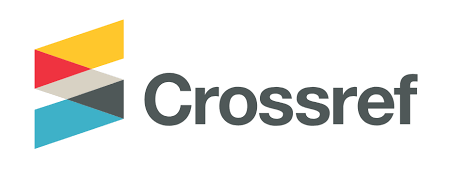PELATIHAN ECO-PRENEURSHIP DI SMKS ST. BONAVENTURA I KOTA MADIUN
Keywords:
Green Economy, Eco-Print, Business Model CanvasAbstract
Vocational High School is a strategic educational place for bringing out entrepreneurial talents, especially eco-preneurship. The benchmark for success in organizing education in Vocational High Schools (SMK) is the number of SMK graduates who can be absorbed into the workforce and who can create jobs, thereby reducing the level of open unemployment in Indonesia. Eco-preneurship is a strategic step in reducing pollution preserving Indonesia's nature and supporting the green economy program of the Indonesian government. Eco-print is one alternative business opportunity in the fashion sector that promises to be environmentally friendly. As a real effort to establish cooperation in the field of learning and community service, eco-preneurship training activities aim to improve the ability of SMKS St. Bonaventura students, Madiun City in internalizing entrepreneurial characters, increasing insight into eco-preneurship, providing skills in making eco-print products through scarf media, and providing insight and training on business model canvas (BMC). Some of the training participants did not understand eco-printing and BMC, and after attending the training, almost 85% of the students were able to practice making eco-print scarves well and fill in the start-up business ideas through the BMC worksheet completely
Downloads
References
Sudirman and D. C. Sari, “Entrepreneurship Siswa Smk,” PRODU Prokurasi Edukasi J. Manaj. Pendidik. Islam, vol. 1, no. 1, pp. 58–71, 2019, doi: 10.15548/p-prokurasi.v1i1.1156.
A. R. Hikmah and D. Retnasari, “Ecoprint Sebagai Alternatif Peluang Usaha Fashion Yang Ramah Lingkungan,” Univ. Negeri Yogyakarta, vol. 16, no. 1, pp. 1–5, 2021, [Online]. Available: https://journal.uny.ac.id/index.php/ptbb/issue/view/2172
M. Y. I. Daulay, F. E. Saputra, and S. Anggarawati, “Peluang Pengembangan Ecopreneurship Menggunakan Perspektif Kreatifitas Layanan,” Manag. Insight J. Ilm. Manaj., vol. 15, no. 1, pp. 108–119, 2020, doi: 10.33369/insight.15.1.108-119.
D. Rahmawaty, N. Nadiroh, A. Husen, A. Purwanto, and I. M. Astra, “Sustainable Fesyen Sebagai Upaya Gerakan Zero Waste Dalam Pembangunan Berkelanjutan Oleh Desainer,” Community Dev. J. J. Pengabdi. Masy., vol. 2, no. 2, pp. 431–437, 2021, doi: 10.31004/cdj.v2i2.1869.
S. Sugiyem, W. Widihastuti, K. Asiatun, S. Widarwati, A. G. Bestari, and K. Warno, “Pelatihan Pembuatan Ecoprint Sebagai Upaya Memberikan Bekal Kewirausahaan Siswa Tata Busana,” J. KARINOV, vol. 6, no. 3, p. 132, 2023, doi: 10.17977/um045v6i3p132-137.
H. Widijanto, I. R. Al-Huda, P. E. P. Rahayu, and T. D. Ardy, “Sosialisasi dan Pelatihan Ecoprint Sebagai Produk Kreatif bagi Masyarakat Desa Ngelo, Jatiroto, Wonogiri,” J. Karya Pengabdi., vol. 5, no. 2, pp. 79–85, 2023, doi: 10.29303/jkp.v5i2.161.
T. J. Saraswati and S. Sulandjari, “Perbedaan Hasil Rok Pias Eco Print Daun Jati (Tectona grandis) Menggunakan Jenis dan Massa Mordan Tawas dan Cuka,” E-Journal Unesa, vol. 7, no. 2, pp. 93–99, 2018.
N. Larasati and Yulistiana, “Penerapan Motif Daun Pepaya Dan Adas Sowa Dengan Teknik Eco Printing Pada Blus,” J. Tata Busana, vol. 8, no. 2, pp. 8–12, 2019.
H. Permadi, N. Oktaviani, and S. Ibrahim, “Pelatihan Batik Eco-printing untuk Meningkatkan Ekonomi Kreatif Khas Desa Ringinsari,” J. KARINOV, vol. 5, no. 2, p. 129, 2022, doi: 10.17977/um045v5i2p129-132.
Downloads
Published
Issue
Section
License
Copyright (c) 2024 Veronika Agustin Srimulyani, Ardianus Laurens Paulus, Sri Rustiyaningsih, Yustinus Budi Hermanto

This work is licensed under a Creative Commons Attribution-ShareAlike 4.0 International License.









